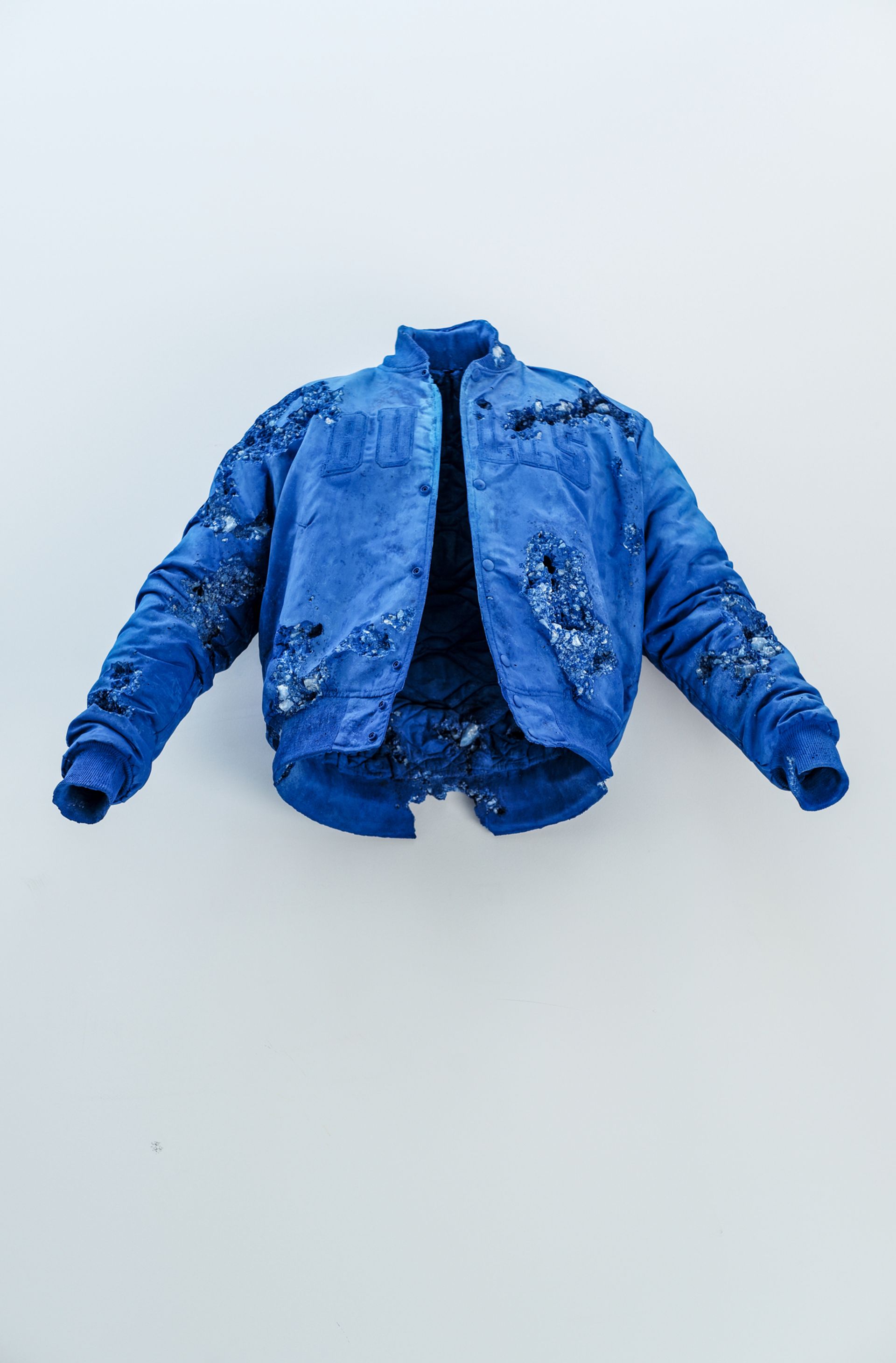Visitors to Frieze New York this year might recall the saturated blue of a calcified American flag displayed on the stand of Emmanuel Perrotin—the first colourful work ever shown by the artist Daniel Arsham, who has a form of colourblindness which leaves him with what he describes as a “drastically reduced” range of colour vision. “For audiences who know my work, it was a bit jarring… they never really considered that the work was lacking colour,” explains the artist, whose characteristic palette of neutrals has largely been dictated by his choice of materials, such as the grey of volcanic ash in cast pieces. This week, Perrotin’s New York branch is due to open Arsham’s first solo show in the city—where he has lived and worked since 1999—which will also be his first show of works in colour, Daniel Arsham: Circa 2345 (15 September-22 October).
This change is due to what Arsham calls a “kind of life-altering experience”: getting to perceive a broader range of colour thanks to glasses by the company EnChroma that resemble “regular sunglasses” but are able to artificially separate the wavelengths of colours in the spectrum that he has trouble seeing. “When can you have a moment in your life when this new thing that’s always been there is revealed to you?” he recalls about the experience, which will be explored in an upcoming documentary by the filmmaker Megan Raney Aarons.
Arsham received a pair of the glasses last autumn, around the time he began working on the foundation for this new exhibition. “Originally the work [in the show] was not going to be in colour,” he says. In the end, “still trying to create a sense of reduction in the work”, Arsham chose only two colours for the show—related, like his previous work, to the materials used—and separated by floor: blue calcite, for the works on the ground floor of the exhibition, and amethyst, for the basement level.

All of the works in the show—a continuation of the artist’s “fictional archaeological world”—are of sports-related objects, such as the “Brancusi-esque” columns of basketballs and American footballs and a Miami Heat jacket in blue on the ground level. On the basement level is a large amethyst installation that Arsham calls a “cavern of sorts”, made of thousands of individually cast balls of various sports, including basketball, volleyball and tennis. He says it looks as if the objects were dumped in a site and calcified over thousands of years, or that an obsessive-compulsive person in the future assembled a cavern out of relics from the past. “All of the things that we have—all of the things that we’ve owned—will certainly become archaeological relics,” he points out, and calls his work “an invitation to rethink the everyday and to rethink time”.
Arsham says he has been working on paintings in colour recently of subjects such as the moon that could also be represented in black and white—“the moon during the day, the moon at sunset… simple translations of a monochrome [or] expected monochrome universe into colour”. But his whole artistic universe has not permanently shifted. “I certainly don’t intend to only make work in these bright and vibrant colours now,” he says. “I think it’s just an added range of palette.”

